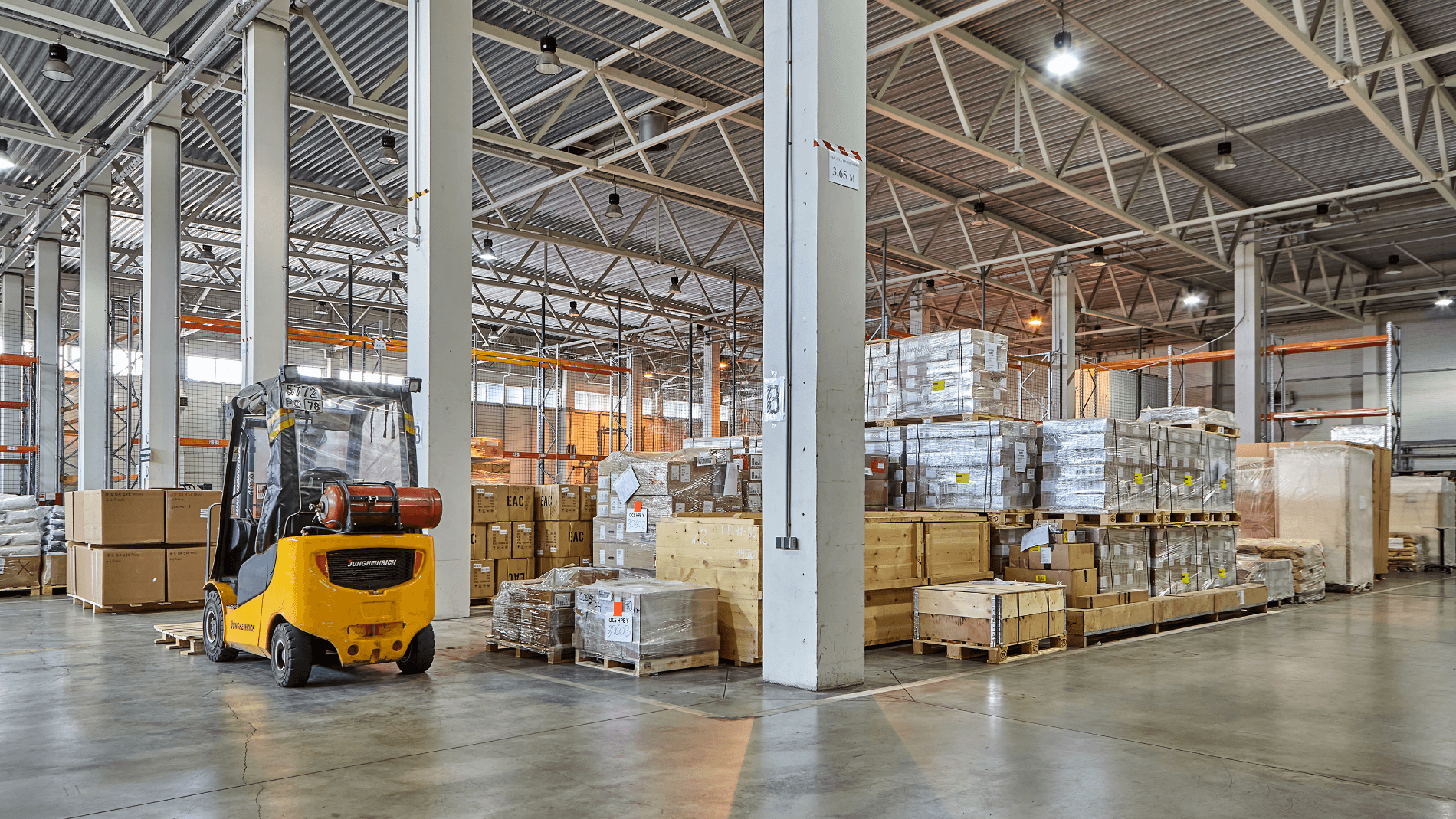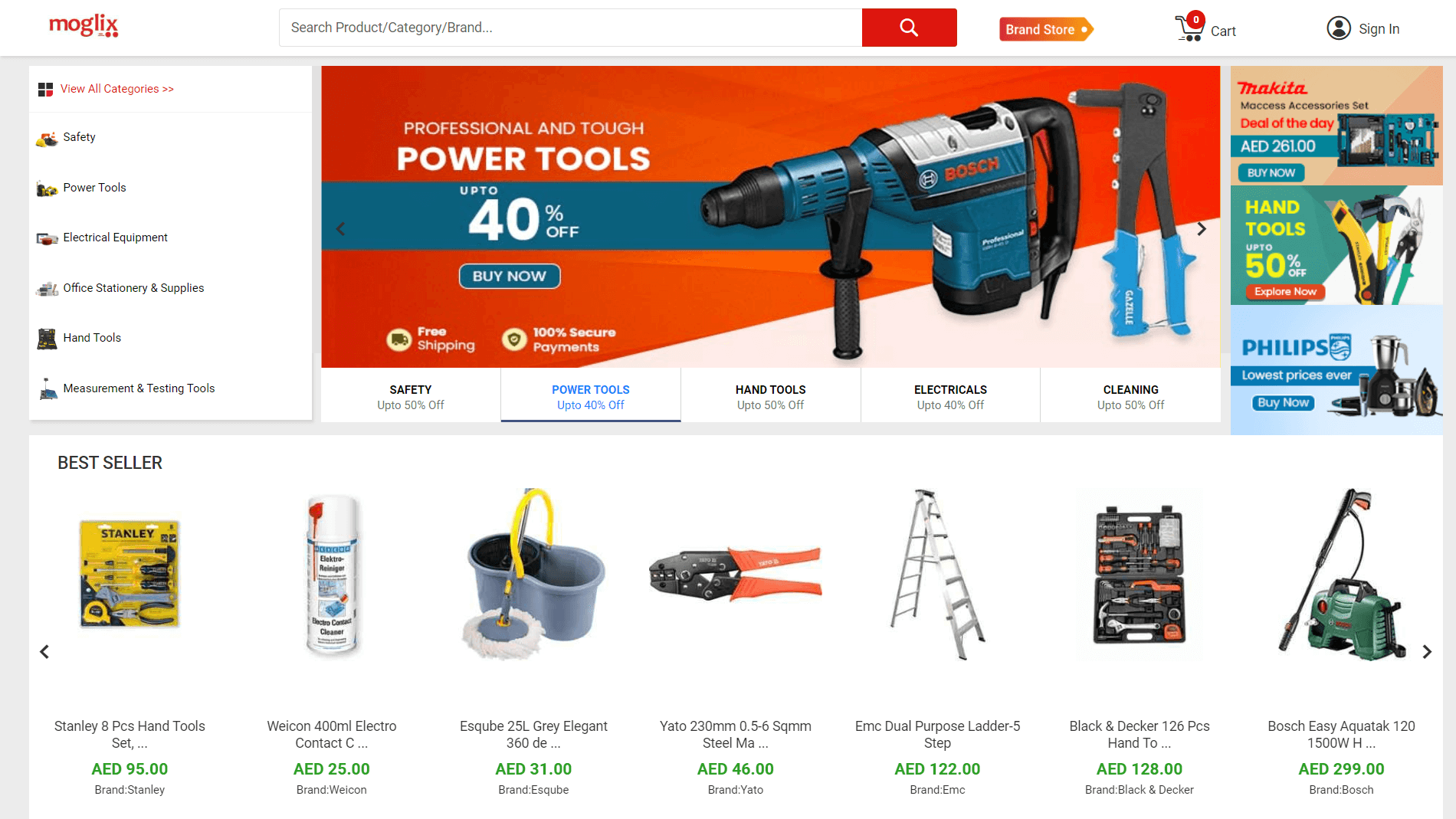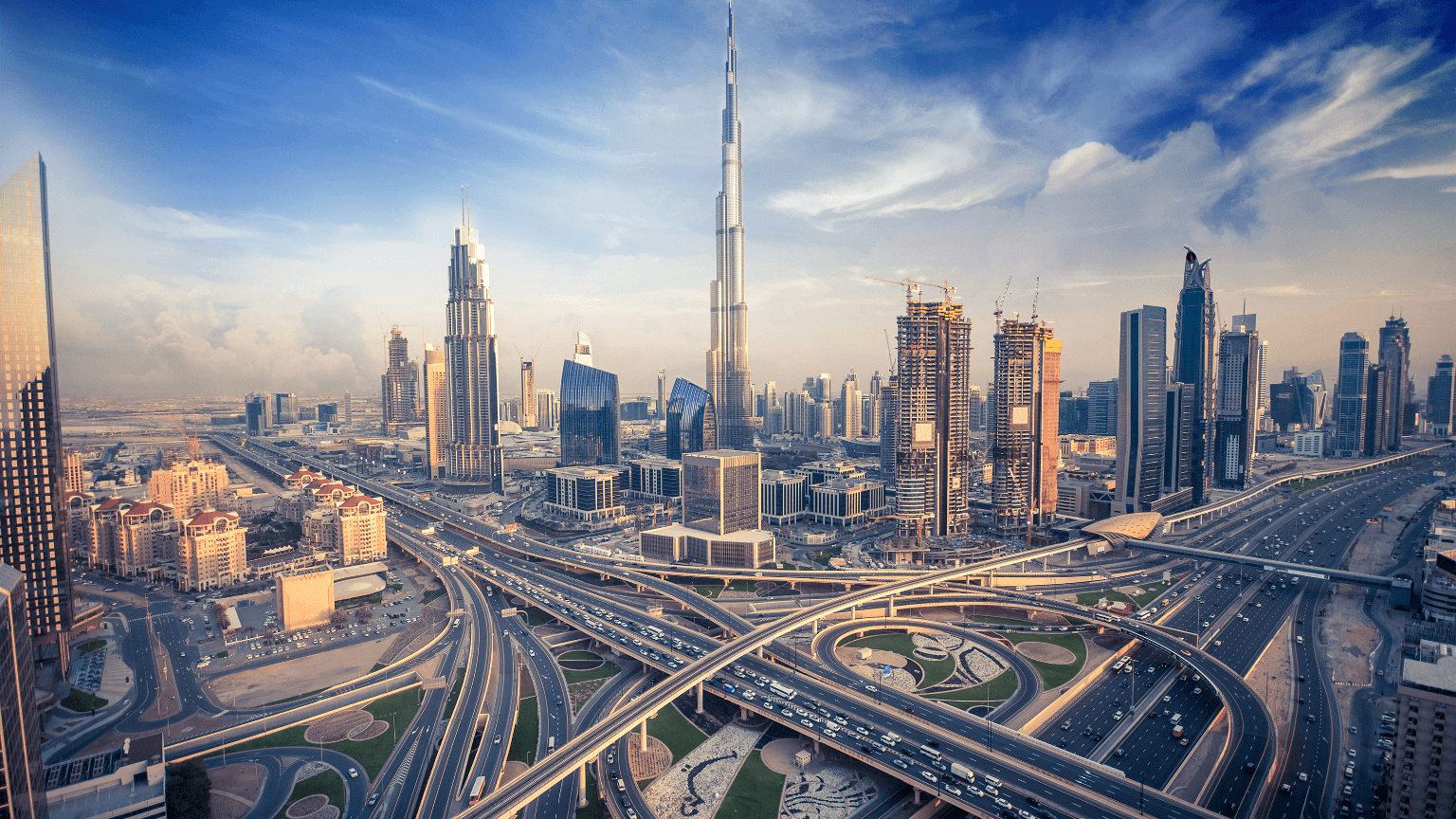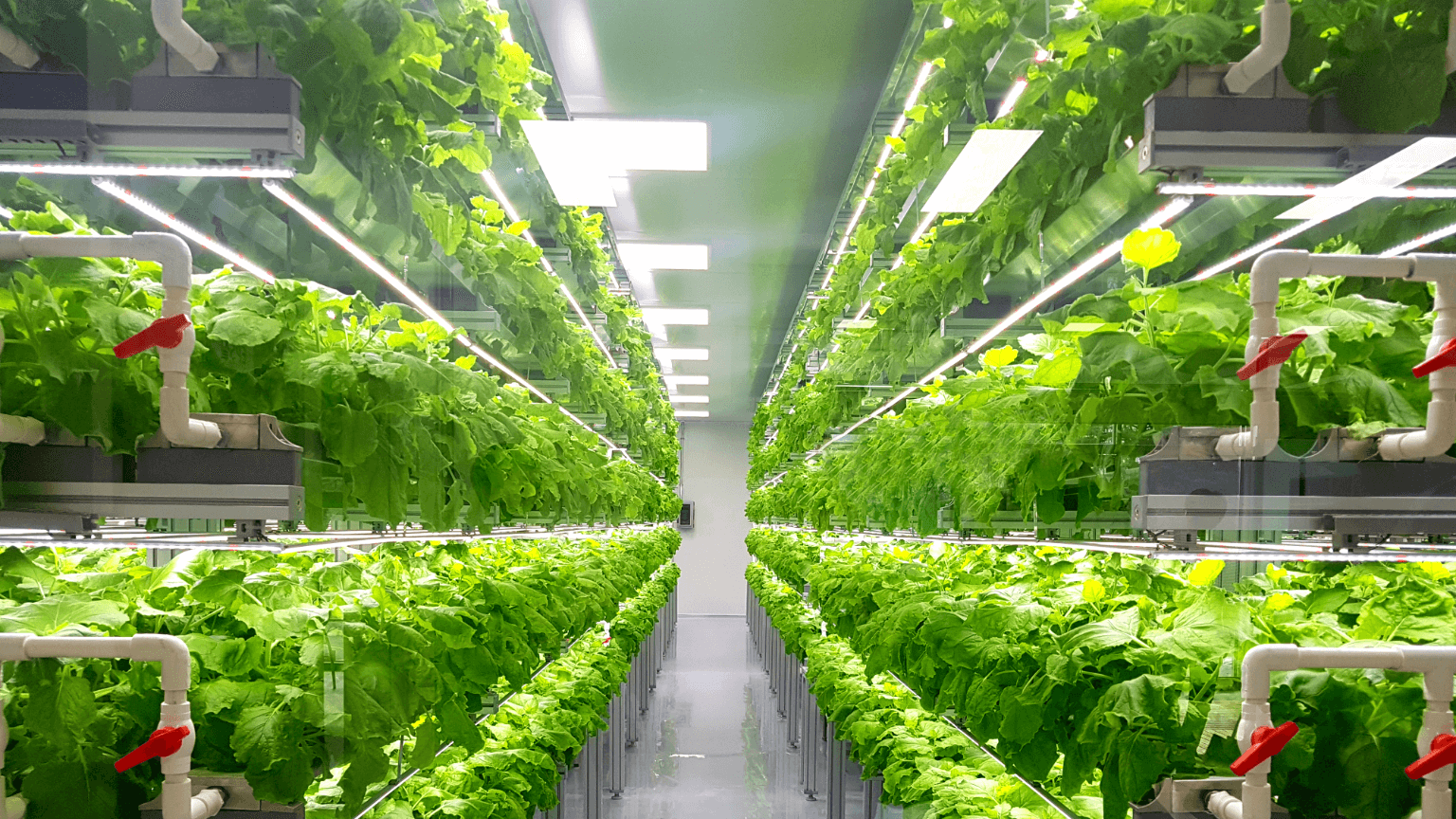Identifying and Eliminating Waste in Warehouse Operations

Identifying and Eliminating Waste in Warehouse Operations
Efficiency and cost savings are critical goals for any warehouse operation. To achieve these objectives, it is essential to identify and eliminate waste within warehouse processes. According to a study by the Warehousing Education and Research Council (WERC), transportation waste accounts for an average of 30% of total logistics costs in warehousing operations. Waste can manifest in various forms, hindering productivity, increasing costs, and impacting customer satisfaction. In this blog post, we will explore different types of waste commonly found in warehouse operations, discuss their impact, and share relevant statistics to emphasize the importance of waste elimination. By understanding and addressing these waste types, businesses can enhance operational efficiency, reduce costs, and optimize their warehouse operations. The Institute of Industrial Engineers (IIE) states that reducing waste in warehouse operations can lead to cost savings of up to 20% and productivity improvements of 10-30%.
Types of Waste in Warehouse Operations:
Transport Waste
Transportation waste refers to inefficiencies in the movement of goods within the warehouse. An example of this could include unnecessary material handling, inefficient routing, and excessive travel distances. These waste factors can result in increased fuel consumption, higher transportation costs, and delays in order fulfillment.
To eliminate transportation waste, warehouse managers can implement strategies such as optimizing delivery routes, consolidating shipments, and utilizing software solutions for route planning and tracking. By doing so, businesses can reduce fuel consumption, transportation costs, and improve overall delivery efficiency.
Inventory Waste
Inventory waste arises from poor inventory management practices. Overstocking, underutilization of available space, and the presence of obsolete inventory can tie up capital, lead to storage inefficiencies, and increase the risk of product expiration or obsolescence.
To address inventory waste, warehouse managers can focus on implementing just-in-time inventory management techniques, conducting regular inventory audits, and utilizing data-driven forecasting models. These strategies help optimize inventory levels, reduce carrying costs, and improve space utilization within the warehouse.
Motion Waste
Motion waste encompasses unnecessary or excessive movements within the warehouse. N example of this can include inefficient picking routes, disorganized storage layouts, and excessive searching for items. Motion waste contributes to increased labor costs, reduced productivity, and longer lead times. The Lean Enterprise Institute found that motion waste can contribute to up to 50% of total labor time in some warehouses, indicating significant room for improvement.
To eliminate motion waste, warehouse managers can optimize the layout of the warehouse, streamline picking paths, and implement efficient storage systems. Leveraging technology solutions like barcode scanning and automated guided vehicles (AGVs) can further enhance efficiency by minimizing unnecessary motion and improving overall productivity.
Waiting Waste
Waiting waste occurs when there are delays or bottlenecks in warehouse processes. It can be caused by factors such as lack of coordination between departments, machine breakdowns, or inadequate staffing. Waiting waste leads to idle time, decreased throughput, and customer dissatisfaction due to delayed order fulfillment.
To address waiting waste, warehouse managers should focus on improving communication and coordination between teams, ensuring machinery is well-maintained and properly serviced, and
optimizing staffing levels based on demand. By minimizing waiting times, warehouses can enhance overall productivity and improve customer satisfaction.
Overprocessing Waste
Overprocessing waste arises from unnecessary or excessive steps in warehouse operations. This can include redundant paperwork, double-checking processes, or additional inspections beyond what is required. Overprocessing waste adds complexity to operations, increases costs, and hampers overall efficiency.
To eliminate overprocessing waste, warehouse managers should review and streamline existing processes, automate repetitive tasks where possible, and ensure that quality checks are performed at appropriate stages. By eliminating unnecessary steps and optimizing processes, warehouses can reduce costs, improve operational efficiency, and accelerate order fulfillment.
Defects and Rework Waste
Defects and rework waste result from errors or substandard quality in warehouse operations. This includes damaged goods, incorrect labeling, picking errors, or inadequate packaging. Defects and rework waste lead to customer dissatisfaction, increased costs, and loss of productivity. The National Association of Manufacturers (NAM) reported that defects and rework waste can account for up to 20% of overall production costs in warehouses
To address defects and rework waste, warehouse managers should focus on implementing quality control measures, providing adequate training to warehouse staff, and utilizing technology solutions such as automated picking systems or quality assurance software. By improving accuracy and minimizing errors, warehouses can reduce rework, enhance customer satisfaction, and increase operational efficiency.
Every warehouse is unique, and identifying specific areas of waste requires a thorough analysis of your own operations. Tailor the waste elimination strategies to suit your warehouse’s specific needs and continually strive for continuous improvement to maximize efficiency and achieve long-term success. To successfully eliminate waste, warehouse managers should adopt a systematic approach that includes analyzing current processes, identifying areas of waste, implementing appropriate strategies, leveraging technology solutions, and continuously monitoring and improving operations. By embracing lean principles and utilizing data-driven insights, businesses can create leaner and more efficient warehouse operations, resulting in cost savings, improved customer experiences, and a competitive edge in the market. Moglix’s evolving warehouse network in UAE is providing reliable inventory management solutions to its customers. With strategically located warehouses in the UAE, Moglix ensures quick and efficient delivery, reducing lead time and optimizing supply chain management. Know More
Challenges faced by e-commerce

Challenges faced by e-commerce
E-commerce is growing at an unprecedented pace in the UAE, as more consumers are turning to online shopping due to its convenience, speed, and safety during the COVID-19 pandemic. According to a recent report by Dubai Economy, the e-commerce market in the UAE grew by 47 per cent in 2020, with online sales reaching AED 24.8 billion ($6.8 billion). Furthermore, the same report predicts that the UAE’s e-commerce market reached AED 100 billion ($27 billion) by 2022, representing a remarkable growth opportunity for businesses operating in the supply chain and procurement sectors. However, with the rapid expansion of e-commerce comes a number of challenges that businesses must overcome to capitalise on this growth trend.
Meeting customer expectations
The rise of e-commerce has changed customer expectations, with many consumers now expecting faster delivery times and more flexible shipping options. For businesses in the UAE’s supply chain and procurement industries, this means adapting to new delivery models and investing in technologies like real-time tracking and automated warehousing.
Managing Inventory
In the UAE, successful inventory management is essential for e-commerce companies. Businesses must make sure they have adequate inventory on hand to meet demand without overstocking, given the rapid growth of internet sales. Understanding procurement holistically and choosing partners who can provide Procurement as a Service is one way firms can better predict customer demand and adjust their inventory levels. Moglix is one such partner that E commerce firms can depend on as it integrates software-as-a-service with on-ground supply chain operations. Its e-catalog based buying model allows an e-commerce like buying experience. Its evolving warehouse network in the UAE allows it to manage inventory and eventual last mile delivery with precision, allowing firms to optimize their inventory cost.
Fulfillment and Shipping
Fulfillment and shipping are key components of the e-commerce supply chain, but they can also be complex and time-consuming. To optimise these processes, businesses in the UAE should consider partnering with reliable shipping and logistics providers, as well as investing in technologies like automated order processing and real-time tracking. A recent survey conducted by PwC Middle East found that 75% of UAE consumers expect their online purchases to be delivered within three days, while 28% expect delivery within 24 hours.
Managing Returns
Returns are an inevitable part of e-commerce, but they can also be costly and time-consuming to manage. To address this challenge, businesses in the UAE should invest in an efficient returns management system that can help them quickly process and resell returned items. According to a survey by Dubai Economy and Visa, 31% of UAE consumers cited the ability to return items as an important factor in their online shopping experience.
Staying Compliant
The UAE has strict regulations around e-commerce, including rules around online payments, consumer data privacy, and product labelling. To ensure they stay compliant, businesses in the UAE’s supply chain and procurement industries should work closely with legal and regulatory experts, as well as invest in technologies like secure payment gateways and data encryption.
Although there are difficulties, e-commerce is revolutionizing the supply chain and procurement sectors in the UAE. Businesses in the UAE need to be proactive in solving these issues if they want to flourish in the e-commerce landscape, from managing returns to meeting client expectations. Businesses can optimise their e-commerce supply chains and procurement processes and remain ahead of the curve.
UAE’s Journey to Net-Zero Emissions through Sustainability

UAE’s Journey to Net-Zero Emissions through Sustainability
As the UAE continues to experience significant growth and progress, it has also realized the impact of its actions on the environment. With the highest per capita carbon footprint globally, the country has acknowledged the need to prioritize sustainability for the well-being of its citizens and the planet. The UAE has set impressive targets to achieve net-zero emissions by 2050 and reduce greenhouse gas emissions by 23.5% by 2030, demonstrating a deep commitment to the cause.
UAE has already declared 2023 to be the ‘Year of Sustainability’, with a focus on implementing sustainability practices like raising the capacity for renewable energy, enhancing energy efficiency, and lowering waste across multiple industries. It has taken important steps to reduce its carbon footprint and promote sustainability.
One of the most notable initiatives is Masdar City in Abu Dhabi, which has set the goal of being carbon-neutral and zero-waste. This incredible urban development utilizes clean, renewable energy sources like solar and wind power and promotes sustainable transportation options such as electric vehicles and public transit.
It is heavily investing in renewable energy projects, such as the Mohammed bin Rashid Al Maktoum Solar Park, which is one of the largest solar energy projects globally. The country’s target of generating 50% of its electricity from renewable sources by 2050 is ambitious but achievable with the UAE’s continued commitment.
The Dubai Metro, a sustainable transportation option that operates on renewable energy, is yet another example of the UAE’s dedication to sustainability. The government has also implemented several other initiatives to encourage renewable energy, sustainable transportation, and eco-friendly infrastructure, furthering the country’s commitment to a more sustainable future.
The UAE, being a major hub of trade, is taking significant steps towards reducing its carbon footprints in the supply chain industry. To achieve this, they are adopting green logistics practices such as providing efficient routing and scheduling, utilizing green transportation systems, promoting sustainable packaging, and implementing green practices in warehouses. Furthermore, it is also prioritizing supply chain sustainability by managing resources sustainably, reducing the use of hazardous materials, promoting sustainable production methods, and ensuring responsible and ethical sourcing of materials and products. By adopting these measures, the UAE is promoting a more sustainable approach to the production and distribution of goods, while also reducing their environmental impact.
According to the World Economic Forum,” Energy, materials, and mobility, which are the top 3 carbon-emitting industries, can reduce emissions by 4-10% by 2030 with an increased focus on the adoption of digital technologies.” Moglix supports the UAE’s vision to become a carbon-neutral economy by 2050. We have been enabling organizations to digitally transform the procurement supply chain process at a rapid yet sustainable pace.
Contact us to know how we can empower your transformation journey!
Indian MSMEs Fueling Dubai’s Economic Diversification

Indian MSMEs Fueling Dubai’s Economic Diversification
Dubai’s reputation as the “Gateway to the Middle East” has long been established, drawing businesses from around the globe seeking to tap into the region’s lucrative markets. Among these, Indian MSMEs have gravitated towards Dubai’s business-friendly ecosystem, strategic location, and supportive regulatory environment. As of 2022, over 83,000 Indian companies have registered in Dubai, signaling its growing appeal to Indian entrepreneurs.
Rising Employment Opportunities in Dubai: A Boon for the Workforce
The expansion of Indian MSMEs in Dubai has created new jobs in various sectors, such as manufacturing, retail, and hospitality. Indian firms and NRI-owned entities have created over 1 million jobs in the UAE, providing local employment opportunities. These businesses have been hiring local talent and providing employment opportunities for Dubai’s growing population. This has helped to boost the Emirate’s economy by reducing unemployment rates and increasing consumer spending. Indian MSMEs’ success in Dubai may inspire more Indian businesses to look into doing business in the UAE and other Gulf nations. For Indian SMEs, this may result in more export options, enabling them to grow their clientele and their earnings. Additionally, Indian businesses may be able to use the UAE’s strategic location as a point of entry to other Middle Eastern and African markets.
Beyond Oil and Gas: A Tale of Economic Diversification
Dubai has traditionally relied on its oil and gas industry as a primary source of revenue. However, the emirate has been working towards diversifying its economy and reducing its dependence on these resources. The expansion of Indian MSMEs has helped to achieve this goal by introducing new industries and business sectors in the emirate. This has helped to make the economy more resilient and less vulnerable to fluctuations in global oil prices.
The Power of Collaboration: Boosting Business Growth
Indian MSMEs expanding their global presence in Dubai also foster business collaborations with local companies. This has helped to create new business opportunities, increase trade relations, and improve the competitiveness of Dubai’s businesses in international markets. Collaboration between Indian MSMEs and local companies has also led to knowledge sharing, transfer of expertise, and development of new products and services.
Knowledge is Power: The Benefits of a Knowledge-Driven Economy.
The expansion of Indian MSMEs in Dubai also contributes to developing a knowledge-based economy in Dubai. For example, the new India-UAE Start-Up Corridor targets 50 tech start-ups from India and UAE, aiming to foster 10 into unicorns by 2025.
Indian businesses are known for their expertise in the IT, healthcare, and education sectors. Their presence in Dubai contributes to developing new knowledge-intensive industries like research and development, consulting, and data analytics.
Bridges to the Future: Infrastructure Development for a Better Tomorrow.
To attract and retain businesses, Dubai needs to have world-class infrastructure in place. The expansion of Indian MSMEs has spured investment in infrastructure development, such as transport, logistics, and telecommunications. This improves connectivity and makes Dubai an even more attractive location for businesses.
Indian MSMEs and Dubai: A Partnership for Mutual Growth and Success
Dubai has emerged as a significant player in diverse sectors such as tourism, logistics, finance, and technology, thanks to favorable government policies and initiatives to attract foreign investment, promote entrepreneurship, and foster innovation. As the emirate continues to evolve as a global business hub, the partnership between Indian MSMEs and Dubai is poised to be a vital one, driving mutual growth and success.
We at Moglix have been working with MSMEs in the UAE and India to enable them a greater market to play in and explore new opportunities.Know more.
Abu Dhabi Gives Small Businesses a Procurement Power-Up!

Abu Dhabi Gives Small Businesses a Procurement Power-Up!
Small and medium enterprises form a significant part of the UAE’s business landscape, and they are critical to the Emirates’ ambition to become the world’s top nation for entrepreneurship.
The UAE is home to about 350,000 SMEs, representing over 94% of all active companies in the country. These enterprises employ 86% of the private sector labour force and contribute over 60% of the total GDP(1). In Abu Dhabi alone, SMEs account for more than 90% of businesses, employ 39% of the workforce and contribute 32% of non-oil GDP
Abu Dhabi SME Champion Programme – Game-Changer
The Abu Dhabi Department of Economic Development (ADDED) recently unveiled the Abu Dhabi SME Champion programme, an initiative to empower SMEs in the region. The programme seeks to assist SMEs in securing procurement opportunities from major private and public sector firms, thus supporting their growth and expanding their capabilities.
Four of Abu Dhabi’s leading companies – Etihad Aviation Group, Aldar Properties, Emirates Steel Arkan Group, and Ittihad Papermill – have already committed to procurement opportunities worth AED 30 million in the programme’s first phase. These companies will also nominate specialized teams to coordinate and work with selected SMEs on training and workshops, equipping them with the necessary skills to compete professionally in procurement.
The Abu Dhabi SME Champion programme is designed to ensure that SMEs in the region are equipped with the necessary skills and resources to compete effectively in procurement and scale up their businesses. The programme’s future cohorts will see the participation of more large companies and government-related entities, indicating a growing trend of support for SMEs in Abu Dhabi.
The programme underscores the government’s commitment to promoting economic growth and championing SMEs as drivers of a vibrant, private sector-driven economy. According to His Excellency Sameh Al Qubaisi, Director General of Economic Affairs at ADDED, Abu Dhabi is focused on developing a knowledge-based, innovation-driven economy, with SMEs and start-ups playing a pivotal role in this vision.
Building a Unicorn Nation
In October 2022, the Ministry of Economy launched the second phase of The Entrepreneurial Nation, an initiative designed to catalyse the growth of 8,000 SMEs based in the UAE, foster foreign direct investment, and establish the UAE as home to 20 unicorns by 2030(3).
The initiative has already generated impressive results, with over 40 successful public-private partnerships and programs established, attracting more than 800 SMEs and over 5,000 individuals to participate. Since its inception, The Entrepreneurial Nation has created significant value, with AED 19.5 million delivered to date.
UAE’s SMEs Set to Take on the World
The UAE’s pro-SME policies and programs are geared towards cultivating a culture of innovation and entrepreneurship, enabling SMEs to play a critical role in the UAE’s economic development. Through these initiatives, the UAE is positioning itself as a leader in the global entrepreneurial landscape.
As a leading procurement solutions provider, Moglix recognises the significance of procurement opportunities for SMEs in the UAE and committed to delivering value at scale. Contact us today to learn more about how we can support your business and help you take advantage of the opportunities provided by the UAE.
UAE’s New Corporate Tax: What You Need To Do To Prepare

UAE’s New Corporate Tax: What You Need To Do To Prepare
The UAE has long been known for its business-friendly policies and tax-free environment. However, the UAE has been looking to diversify its revenue streams with the global economic landscape constantly evolving. In January 2023, the UAE announced the introduction of a new federal corporate tax law to promote economic growth and broaden its revenue base.
This new tax law marks a significant departure from the previous tax-free environment, as it imposes a 9% corporate tax rate on companies operating in the UAE, with some exemptions and deductions available. UAE businesses must stay informed about the new corporate tax regulations to ensure compliance and avoid potential penal consequences.
The Taxman Cometh: What UAE’s Corporate Tax Means for Taxable Entities
The new corporate tax will come into effect on 1 June 2023 and apply to financial years commencing on or after that date. The corporate tax rate is set at 9% and will only apply to taxable income exceeding AED 375,000. Any income below this threshold will not be subject to tax.
Under the new law, resident companies will be taxed on their worldwide income, meaning any income derived from inside and outside the UAE. To be considered a tax resident of the UAE, a legal entity must meet specific criteria, including being established under UAE law, being effectively managed and controlled in the UAE even if established under foreign law or being determined as a tax resident by the tax authorities.
Meanwhile, non-resident companies will be subject to corporate tax under specific circumstances, such as having a permanent establishment in the UAE, deriving UAE-sourced income, or having a nexus in the UAE as determined by the tax authorities.
Free zone entities will also be subject to tax on non-qualifying income. The tax authorities will define qualifying income in due course.
Tax Breaks for the Lucky Few: Who’s Exempt from Corporate Tax in the UAE?
Certain entities will be exempt from the corporate tax. These exempt entities include government entities and government-controlled entities, as well as those engaged in extractive or non-extractive natural resource businesses. The exemption will ensure the growth of the UAE’s financial services and the oil and gas sector.
Qualifying public benefit entities, investment funds, and public or private pension or social security funds that meet certain conditions are also eligible for exemption.
Keeping Records: Your Key to Tax Compliance
Taxable entities will be required to maintain accurate records and documents for 7 years after the end of the relevant tax year. These records will be essential to back up the information provided in tax returns or any other documents filed with the tax authorities and will help the tax authorities determine the taxable income.
But it’s not just taxable persons who need to keep records. Even if you’re exempt from tax, you still need to maintain records that will allow the tax authorities to verify your exempt status. These records should also be kept for 7 years after the end of the relevant tax year.
Tick Tock Taxpayers: Deadlines for Tax Returns and Payments
Taxpayers must file a tax return within 9 months from the end of the tax year. They must also make corporate tax payments within 9 months from the end of the tax year. The good news is that taxpayers are not required to make advance corporate tax payments.
Although registration for e-filing of tax returns under the new federal corporate tax regime is yet to be notified by the FTA, the tax returns can be electronically filed on the EmaraTax portal of the tax administration once it is announced.
From Compliance to Optimization: Enhance Your UAE Business Operations
As UAE sets its sights on diversifying its economy, the recent announcement of a federal corporate tax law signals a new chapter for businesses operating there. Moglix supports businesses in the UAE, offering solutions to streamline procurement processes. Contact us to learn more.
The UAE’s Vertical Farming Renaissance: A New Era in Food Production

The UAE’s Vertical Farming Renaissance: A New Era in Food Production
As a country that faces the challenge of arid weather conditions, the United Arab Emirates (UAE) has always been a pioneer in innovation and technology to overcome challenges related to agriculture. Vertical farming is one such innovative solution that stands out.
With the global vertical farming market projected to reach USD 9.7 billion by 2026 and grow at 25%, the UAE is rapidly positioning itself as a global leader in the industry. Many startups and companies in the UAE have already made significant investments in this promising industry, and it’s only a matter of time before we witness a vertical farming revolution in the region.
Sowing the Seeds of Change: Reinventing Agriculture Through Vertical Farming
The world’s population is on an accelerated rise, and with it comes the pressing issue of food security. Climate change, water scarcity, and urbanization are just some factors that will affect the availability and accessibility of food.
Vertical farming is a promising solution that has the potential to revolutionize the agriculture industry. This innovative technique involves growing crops in vertically stacked layers, allowing for high-density cultivation and maximum use of available space. Unlike traditional farming methods, vertical farming requires no soil and uses hydroponic and aeroponic techniques that rely on nutrient-rich water or air for agriculture. It also uses minimal water and no pesticides, making it an eco-friendly and sustainable solution for food production.
Furthermore, agritech startups are leveraging precision agriculture to optimize the benefits of vertical farming. Precision agriculture tailors farming practices to specific crops and regions using data and analytics, providing a smart-agriculture approach that transforms traditional agriculture practices.
As the UAE continues to invest in innovative technologies and sustainable solutions, vertical farming is helping the country meet its food security goals and become a leader in sustainable agriculture practices.
Sky’s the Limit: How UAE’s Vertical Farms Will Feed the Future
The UAE is determined to lead the global food security movement by 2051 with the implementation of its National Food Strategy. This ambitious initiative aims to enhance local food production while promoting sustainable agricultural practices using modern technologies.
Vertical farming is one such technology that is helping the country achieve its food security goals. The UAE is making great strides in vertical farming by scaling up food production through multiple indoor farms. A testament to this progress is the world’s largest R&D indoor vertical farm, which was recently opened in the UAE by US-based AeroFarms in February 2023. This facility, which the Abu Dhabi Investment Office supports, further cements the UAE’s commitment to next-generation agriculture in arid and desert environments.
The UAE’s commitment to food security and its support for innovative technologies has made it an attractive destination for agritech investors. Its robust infrastructure and government initiatives have helped several agritech start-ups, such as Pure Harvest Farms, successfully raise funds, making it the highest-funded agritech start-up in the MENA region.
With government support and innovative application of technology, the UAE is poised to become a leading player in sustainable food production and agritech investment.
Join the Agritech Gold Rush: Opportunities in UAE’s Vertical Farming Industry
With the region’s harsh desert climate, the need for innovative and sustainable food production methods is more pressing than ever. This presents an exciting opportunity for agritech investors to get involved in sustainable food production and contribute to the growth and development of the industry. At Moglix, we recognize the potential for growth and innovation in this field and are committed to supporting sustainable food production in the region. Contact us to learn how we are helping organizations digitally transform their procurement and supply chain by creating seamless B2B procurement ecosystem.
Celebrating a year of India-UAE CEPA: Impacts and Opportunities

Celebrating a year of India-UAE CEPA: Impacts and Opportunities
The celebration of one year since the signing of the India-UAE Comprehensive Economic Partnership Agreement (CEPA) has begun, marked by the establishment of the UAE Chapter of the India Business Council (UIBC-UC), which corresponds to the existing UIBC-India Chapter. The purpose of this initiative is to strengthen trade and investment between India and the UAE, promoting economic ties and fostering prosperity. Now, it is essential to examine the significance of the India-UAE economic partnership and the advantages of the CEPA agreement that have been realized thus far, as we reflect on the past year.
Agreement – India-UAE Economic Partnership
The landmark CEPA agreement—the first-ever bilateral trade deal for the UAE and India’s first FTA foray in the MENA region—was signed on February 18, 2022, to propel economic progress, market openness, regional integration, and strategic cooperation. It aimed to transform India-UAE trade relations by reducing and removing tariffs on over 80% of the product lines (90% in value terms) and augmenting services trade to $15 billion by enhancing market access. The CEPA pact also targeted investment facilitation, targeting $75 billion worth of investments from the UAE, by directing funds to India’s priority sectors and enabling collaboration with SMEs.
However, the biggest CEPA agreement’s opportunity lies in its ability to secure supply chains, thus putting this relationship on track to achieving $100 billion in non-oil annual trade by 2027.
Impact – CEPA
In the eight months since the agreement came into effect on May 1st, 2022, the India-UAE economic partnership has undergone a colossal transformation. Some of the major CEPA agreement benefits are:
- The bilateral trade value rose 27.5% YOY to reach $57.8 billion in the first eight months of operation in 2022, growing $12.5 billion from last year .
- In less than a year, non-oil trade between the UAE and India has grown 10 per cent – a surge of $50 billion.
- Sectors like agriculture, automobiles, electrical machinery, and gems and jewelry reported 39%, 35%, 28%, and 18% value-based export growth, respectively.
Opportunities – India UAE Investment
- Over 11,000 Indian companies got themselves registered in Dubai in the past year alone, and now their total is in excess of 83,000, signaling a strengthening of bilateral economic linkages.
- A Dubai Incubation Center for encouraging innovation in logistics was set up by DP World in collaboration with Invest India under the ambit of the CEPA agreement.
- The Ducab Group launched a Bengaluru-based regional office to provide its metal and cable products to the Indian construction and energy sectors.
- The CEPA agreement’s impact can also be seen in the sustainability space, with the setting up of a 300 MW renewable energy project in Gujarat and ecological food parks across India.
Prospects – India UAE FTA
That’s not all. With initiatives like virtual trade corridors and the establishment of the Abu Dhabi Investment Authority’s offices in GIFT City on the anvil, the India-UAE collaboration is expected to scale higher. UAE’s private sector also plans to invest $2.5 billion in logistics, renewable energy, food processing, and retail projects in Uttar Pradesh.
Last year has been phenomenal, the CEPA agreement has resulted in a fusion of the financial, technological, and human capital of both nations, thereby serving as a fertile ground for economic prosperity and innovative cross-border collaboration. India-UAE CEPA has the potential to become a model for other countries seeking to strengthen economic ties with the UAE. The CEPA agreement has already demonstrated its success in boosting trade and investments between India and the UAE. It has provided a framework for enhanced economic cooperation, including in sectors such as services, investment, and intellectual property. Moreover, the establishment of the India Business Council-UAE Chapter has facilitated further collaboration and networking between the two countries. These developments signify the effectiveness of the India-UAE CEPA as a potential model for other countries looking to deepen economic ties with the UAE.
UAE’s FTZ (Free Trade Zones): A crucial piece in the region’s booming business

UAE’s FTZ (Free Trade Zones): A crucial piece in the region’s booming business
The UAE has steadily established itself as a supply chain nerve center in the 21st century. A significant driving factor behind this can be traced back to the UAE’s free trade zones (FTZs). With 45 free zones in Dubai, Abu Dhabi, Sharjah, Ajman, Fujairah, Ras al-Khaimah and Umm al-Quwain, the region has redefined economic movement and procurement across borders.
Let’s take a deep dive into what these FTZs are and why they matter.
UAE’s free trade zones: The revolution driving the region’s business boom
Free trade zones (FTZs) are designated areas within a country where goods can be imported, manufactured, and exported without being subject to certain taxes and tariffs. They promote economic development and boost foreign investment by providing tax and regulatory incentives to businesses operating in these zones.
FTZs have been pivotal in boosting business in the UAE region. They have diversified economic activity, facilitated more efficient imports and exports, and put the UAE on the map as a preferred investment destination.
Businesses in FTZs enjoy various benefits like zero duties on imports and exports and significant tax breaks w.r.t income tax and corporate tax. Some free zones also have extremely low minimum share capital requirements, support foreign ownership and may not even require a physical office presence in the UAE.
Thanks to such incentives, the future of FTZs holds great promise. The Dubai Free Zones Council chairman — Sheikh Ahmed bin Saeed — expects that the FTZs in Dubai alone could contribute over $68 billion to the emirates’ GDP by 2030.
How do FTZs boost the procurement and supply chain in the UAE?
Establishing a business in an FTZ or integrating such free zones in your supply chain could give you a strategic advantage. Firstly, the massive tax breaks in the UAE’s free trade zones could reduce procurement costs. Additionally, passing on the cost benefits to your customers could offer cumulative cost advantages over time, giving you a competitive edge over your peers.
Operating in an FTZ also comes with stringent reporting regulations. Again, this may seem like a liability, but it directly translates to increased visibility across the supply chain, a valuable procurement advantage.
Decoding key laws that have impacted business in the UAE

Decoding key laws that have impacted business in the UAE
A study of international supply and trade over the past few years reveals a fascinating insight — the UAE has emerged as one of the largest supply chain nerve centers on a global scale. In its recent study titled ‘Destination Digitalisation: The Future of Logistics, ADQ uncovered predictions that the UAE’s logistics market is poised to grow phenomenally by 2026 — at 8.41% annually to reach the $31.4 billion mark.
Much of the region’s logistics success story can be traced back to the UAE’s favorable procurement supply chain regulations. Here is a preview of some such legal provisions.
UAE’s free zone law
Free zones in the UAE are designated areas where foreign investors can establish and operate a business without needing a local sponsor. Operating in a free zone comes with benefits like 100% foreign ownership, 100% repatriation of capital and profits, more relaxed import and export regulations and, above all, exemptions from certain taxes and tariffs.
The region’s FDI regulations
The United Arab Emirates (UAE) has a relatively open policy towards foreign direct investment (FDI) and actively encourages investment in the country through various incentives. FDI regulations in the UAE allow for 100% foreign ownership of companies in most sectors, except for some like oil & gas and media.
By protecting foreign investors through bilateral investment treaties with many countries, the UAE has cemented its position as a central hub for businesses worldwide.
Tax regulations in the UAE
Although the standard VAT rate of 5% applies to the supply of most goods and services within the UAE, some supplies are exempt from VAT or carry a 0% tax rate. For instance, supplies for the export of goods/services to countries outside of the GCC and supplies related to international transportation are subject to zero-rated tax. These beneficial provisions reduce the overall cost of procurement of such supplies in the region.
Customs regulations in the UAE
The UAE is home to 12 commercial trading ports, and over 60% of the incoming cargo in the GCC arrives through the region’s seaports. Moreover, UAE’s strong and beneficial customs regulations make commercial activity via seaports lucrative for various international suppliers. As a result, the region has exempted all goods imported into FTZs from customs duties. Further, re-exports from these free zones are not liable to duties and taxes.
Want to expand your business in the UAE?
If you answered yes, it is vital to understand the different laws in the UAE that impact procurement. This way, you can manage compliance efficiently and take advantage of the laws in the region that promote supply chain mobility. With a procurement supply chain partner like Moglix, you work with business that are complaint with laws and regulations that govern the region, ensuring seamless business setup and operations. Know More

